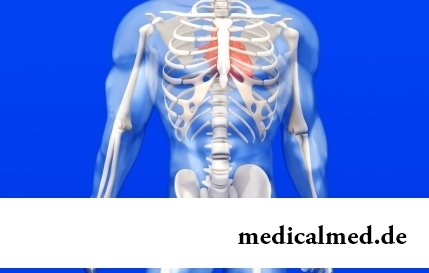





Pathologist
The pathologist - the doctor with the higher medical education specializing in pathological anatomy - opening of the dead for the purpose of detection of possible pathologies, proceeding from a normal structure of a human body. Treatment of morbid conditions does not belong to duties of the doctor of the pathologist.

The profession of the pathologist arose in the 19th century. The first scientific principles of the morphological method applied in pathology and till today were put by the German scientific figure Rudolf Virkhov who showed a cellular essence of any disease in practice. Eventually to explain the nature of the pathological processes proceeding in an organism with one cellular theory it appeared it is impossible, there were hormonal and neurohumoral doctrines which laid the foundation for a patologoanatomiya as the new functional direction in medicine.
Tasks and subject of studying of the doctor of the pathologist
Subject of studying of the doctor of the pathologist are pathological processes at the cellular, fabric, subcellular and organ levels. Treat the tasks entering professional activity of the specialist:
- Identification of the reasons and conditions of development of the pathological processes happening in an organism;
- Studying of a pathogeny - the mechanism of origin and a course of a disease, and also its separate manifestations;
- Establishment of the characteristic of a morphological picture of a disease;
- Studying of possible complications and result of pathological process;
- Research of pattern of change of a picture of a disease (pathomorphism);
- Studying of the pathological processes which appeared owing to holding medical and diagnostic procedures (yatrogeniya);
- Posthumous and intravital diagnosis of diseases by means of the methods studying both an external, and internal structure of an organism.
During the practical activities the doctor the pathologist carries out both posthumous, and intravital diagnosis of pathological processes. Intravital diagnosis is called the term "biopsy" that in the literal translation with Greek means "I look live", meaning capture at the sick person of fabrics from remote bodies or their separate parts. The piece of fabric received at the same time is called bioptaty. During the research of biological material the pathologist defines existence or absence in it of cancer cells and sends the corresponding result with the indication of the diagnosis to the attending physician.
In a complex with other researches the conclusion of the pathologist plays an important role when diagnosing diseases, planning further treatment, operational interventions.
Pathoanatomical opening
Opening by the pathologist and research of corpses of the died people carries the name "autopsy" ("I look itself"). The purpose of pathoanatomical opening (or as it is called still, abductions) is definition of nature of the painful changes which caused the death of the patient. Distinguish also medicolegal opening which is carried out by order of judicial authorities if it is supposed that death came owing to criminal or violent actions.
This medical procedure is important in practice of teaching activity, improvement of medical knowledge, diagnosis and treatment of diseases. On the basis of pathoanatomical opening problems of resuscitation and thanatology are solved, mortality statistics are defined.
In all European countries including in Russia, pathoanatomical opening is made only with the written permission of relatives of the dead, except cases when:
- It is impossible to establish the exact final diagnosis of the disease which entailed death regardless of duration of finding of the patient in a hospital;
- Suspicion about overdose of the dead was revealed by medicines;
- Death came owing to diagnostic, preventive, tool, resuscitation, medical procedures, during hemotransfusion;
- Death came at suspicion of infectious, oncological diseases, environmental disasters;
- Approach of death at pregnant women, women in labor, and also the women who are in a puerperal period was recorded.
- The fact of death demands a medicolegal research of a corpse.
Results of the conducted researches are made out in the form of the pathoanatomical conclusion. The conclusion of the pathologist in this case reflects a cause of death, whether it be death from a disease, violent death or a medical error.
How to receive a profession of the pathologist
The doctor the pathologist is the person with the higher medical education who had postgraduate training in "Pathological anatomy". This specialist has to know the maintenance of pathological anatomy as practical discipline, to own modern methods of pathoanatomical diagnosis, rules of filling of normative and legal and methodical documents, order of conducting pathoanatomical examinations, the general and private principles of clinical, laboratory, tool diagnosis of systems and bodies of a human body, techniques of treatment of basic diseases, conducting medico-social examination, etc.
The profession of the pathologist means existence at the specialist of such personal qualities as patience, scrupulousness, analytical thinking, good memory, responsibility, respect for the high moral principles.
Even if heart of the person does not fight, then he all the same can live during a long period, as the Norwegian fisherman Jan Revsdal showed us. Its "motor" stopped for 4 hours after the fisherman got lost and fell asleep in snow.

The sudden heat on all body which is followed by perspiration and a cardiopalmus – the phenomenon familiar to many people. Most often t...
Section: Articles about health
You heard that laughter prolongs life? Researchers did not manage to establish longevity direct link with sincere fun yet, but several facts confirming beneficial influence of risibility on the state of health are clinically proved....
Section: Articles about health
Iodine - one of thirty most important microelements in our organism. The main role of iodine consists in synthesis of thyroid hormones of a thyroid gland - the substances which are responsible for the majority of exchange processes of an organism. It is known that thyroid hormones consist of iodine more than for 65%. The lack of iodine leads to decrease in production of hormones and, as a result, development of a hypothyroidism. The long condition of deficit can become a source of problems of the cardiovascular, bone, digestive SI...
Section: Articles about health
We live during an advertizing era. Daily each person receives a solid portion of persuasive councils about what to eat to be здо...
Section: Articles about health
Within several decades of our compatriots convinced that the use of butter nasty affects a condition of coronary vessels. As a result the reputation of a product was impaired thoroughly a little, and many almost ceased to include...
Section: Articles about health
The advantage of swimming for the person is so high that this sport is not only the most popular, but also is widely applied in medicine and rehabilitation processes. If you look for for yourself the occupation allowing pleasantly and to spend time, then swimming with advantage – the fact that it is necessary for you. And give learns several facts about swimming....
Section: Slideshow
The naturopathy sometimes moves as the new direction of medicine, something like fashionable hobby, and there is nothing farther from the truth....
Section: Articles about health
Subfebrile temperature call fervescence to 38 degrees, and subfebrile condition - existence of such temperature over 3 days, and quite often it happens without the visible reasons. Existence of subfebrile condition - a strong indication of disturbances in an organism which can...
Section: Articles about health
Traveling all over the world, many try to try the most exotic dishes of national cuisines. There is even a so-called gastronomic tourism which, according to gourmets, not only allows to receive new feelings, but also is capable to show life of other people from absolutely unexpected side....
Section: Articles about health
When overcomes feeling of hunger, and an opportunity to have dinner fully is absent, having a snack − small on volume comes to the rescue...
Section: Articles about health
Kidneys perform the most important function of clarification of blood from those products of metabolic processes which cannot be used by an organism for obtaining energy and construction of new cells. With the urine produced by kidneys from a body of the person bulk is removed...
Section: Articles about health
For many women the word "fat" sounds as a sentence. In aspiration to an ideal figure they try to exclude, first of all, from the menu all dishes containing fats without having at the same time a clear idea of a role of these substances in exchange processes, and of effects for health with which food restrictions of this sort are fraught. For what the human body needs fats and as their deficit in a diet is shown, we also will try to find out....
Section: Articles about health
Use of medicinal plants in therapy is urgent today, more than ever. The drugs made of curative herbs cannot on...
Section: Articles about health
The stroke is one of the most widespread diseases of the person, annually in the world about 6 million cases of this pathology are registered. According to medical statistics, strokes occur almost three times more often than myocardial infarctions. Disease otno...
Section: Articles about health
The mankind knows that some toxins at intake in the minimum quantities have therapeutic effect from an extreme antiquity. Many substances recognized poisonous are applied in the medical purposes also today, being the main operating components of the medicines which are officially produced by pharmaceutical industry. Let's tell only about the most known of them....
Section: Articles about health
All diseases from nerves – in this joke a big element of truth, are said by doctors. Constant stresses lead body to decrease in protective forces...
Section: Articles about health
Good appetite was always considered as a sign of good health. The correct operation of the mechanism which is responsible for the need for nutrients and receiving pleasure from process of its satisfaction demonstrates that the organism functions without special from...
Section: Articles about health
The kid who was recently born is surrounded with love of adult family members and their cares without which the baby cannot exist. Some parents consider that gentle attachment and caress are quite enough that the child correctly developed and was happy, but it not so. It is important to know as much as possible about specifics of care of the baby, the reasons of his behavior and possible problems. Only the "able to see" love will provide to the little man that it is necessary for him....
Section: Articles about health
Dogrose – one of the most widespread adornment and medicinal plants growing practically in all territory ours...
Section: Articles about health
It seems, quite recently you brought the baby from maternity hospital, but time flew by, and here it is already going to join the first in life children's collective. How to prepare the child for visit of a garden? What needs to teach him to facilitate process адап...
Section: Articles about health
Season of activity of viral infections in the heat. Everyone can get sick, but probability of this unpleasant event it is possible and it is necessary to minimize. There is a number of rules, following to which will help or to avoid absolutely infection with flu or a SARS, or to have an illness benign and without essential complications. About ways of prevention of seasonal infections the speech in this article will also go....
Section: Articles about health
Helminthosis is one of the most widespread diseases. Statistically, with any species of helminths it is infected porridges...
Section: Articles about health
All like to sing. Small children with pleasure are engaged in a vocal, not especially thinking of hit in a melody. Adults most often hesitate, being afraid to show lack of talents in this area, and it is vain: singing is very useful for health....
Section: Articles about health
It is known that the person for 80% consists of water which participates in all processes of an organism. The person loses liquid daily – as a result of sweating, breath, an urination, and its insufficient completion due to various reasons can lead to dehydration of varying severity. Dehydration (dehydration) occurs already in case of loss of liquid in number of 1% of body weight and can result both in easy thirst, and by the death. In time to notice signs обезвож...
Section: Articles about health
The next flu epidemic leads to the next panic, from year to year we give in on these manipulations: professionally alarming goal...
Section: Articles about health
Radiological methods of a research are applied in medicine more than hundred years, and thanks to them millions of lives were saved. In many cases without X-ray it is impossible to make exact idea of a condition of bodies and fabrics, it is correct to make the diagnosis. Those...
Section: Articles about health
Life does not indulge the modern woman special emotional comfort and carelessness. The fatigue, troubles at work, misunderstanding in a family and various illnesses immediately affect a condition of hair and skin. And there is a wish to look safe and attractive so! Substantially competently picked up diet can improve situation....
Section: Articles about health
